Lumbar Vertebrae, Sacrum, and Coccyx
1/50
There's no tags or description
Looks like no tags are added yet.
Name | Mastery | Learn | Test | Matching | Spaced |
|---|
No study sessions yet.
51 Terms
Lumbar vertebrae are vertebrae of the ___
abdomen
How many lumbar vertebrae are there?
5
How do lumbar vertebrae compare in size to other vertebrae?
they are the largest
What type of curve do lumbar vertebrae have?
lordotic (secondary; convex anteriorly, concave posteriorly)
Explain the shape and size of the body of lumbar vertebrae
large, bean shaped
increases in size from the 1st to the 5th
superior and inferior surfaces are slightly concave
sides are concave
Explain the projection of the transverse processes of each lumbar vertebrae
L1-L3: directed laterally
L4-L5: inclined slightly superiorly
Explain the location and size of the pedicles of the lumbar vertebrae
projected posteriorly off of the body
contain the inferior and superior vertebral notches
large, thick, and blunt
horizontal projection posteriorly
Explain the location of the lamina of the lumbar vertebrae
posterior to the pedicles and transverse processes
What is the pars interarticularis?
part of the lamina between the superior and inferior processes (found only on lumbar vertebrae)
only visualized in an oblique
What is the part of the lamina between the superior and inferior processes on lumbar vertebrae?
pars interarticularis
Explain spina bifida
no fusion of posterior lamina (spinal cord is not fully surrounded)
can occur anywhere in the spine (usually L-spine)
What are the 3 types of spina bifida?
spina bifida occulta
less severe
meningocele
linings of spinal cord protrude through the defect
myelomeningocele
the spinal cord itself protrudes through the defect
usually paralyzing
Explain what is special about the 5th lumbar vertebrae
the body is deeper in the front than in the back so it can articulate with the sacrum (gives it a wedge shape)
spinous process is blunt and short
transverse processes are thick
What is the largest amphiarthrodial, cartilaginous, symphysis joint? (also the most moveable joint in the vertebral column)
lumbosacral joint
Explain the lumbosacral joint space image
performed as a supplement lateral
interiliac line
5-7o caudal angle (depending on interiliac line)
Explain spondylolysis
fracture or defect in the pars interarticularis of a lumbar vertebra
can result in spondylolisthesis
Explain spondylolisthesis
forward displacement of a vertebra over an adjacent one (L4-L5, L5-S1)
The inferior articulating process of the 5th lumbar spine articulates with the ___
superior articulating process of the sacrum
The articulating processes of the lumbar spine sit at a ___ degree angle to MSP
30-50o
How are zygapophyseal joints visualized on an x-ray?
45o oblique
When are scotty dogs demonstrated?
30-50o oblique
AP = side down
PA = side up
Explain the parts of the Scotty Dog
ear - superior articulating process
eye - pedicle
nose - transverse process
neck - pars interarticularis
body - lamina
(front) leg - inferior articular process
The inferior and superior notches of the lumbar vertebrae lie at a ___ degree angle to MSP
90o
How are intervertebral foramina visualized on an x-ray?
in a lateral position
Explain the curve of the sacrum
concave anterior, convex posterior (primary curve)
What makes up the sacrum? How is it labeled?
5 fused false vertebrae segments
labeled as 1st sacral segment, 2nd sacral segment, etc.
The sacral segments are separated by ___
transverse lines
Which vertebra is at the level of ASIS?
2nd sacral segment
Explain the location of the base and apex of sacrum
base: superior part
apex: inferior part
Explain the difference between male and female sacrum
male is longer
female has more of a curve (inferiorly)
Explain the 1st sacral segment
resembles vertebra of the lumbar region
last intervertebral joint
last pair of intervertebral foramina
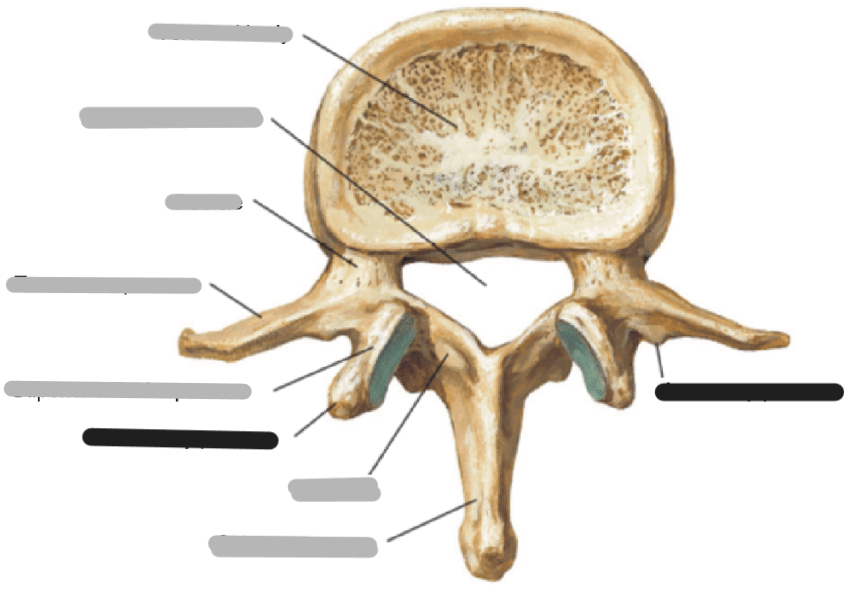
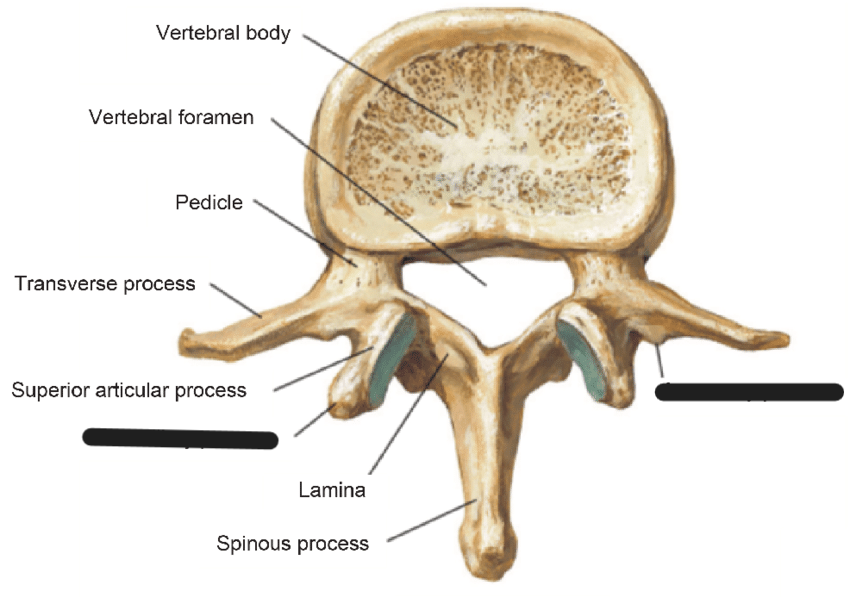
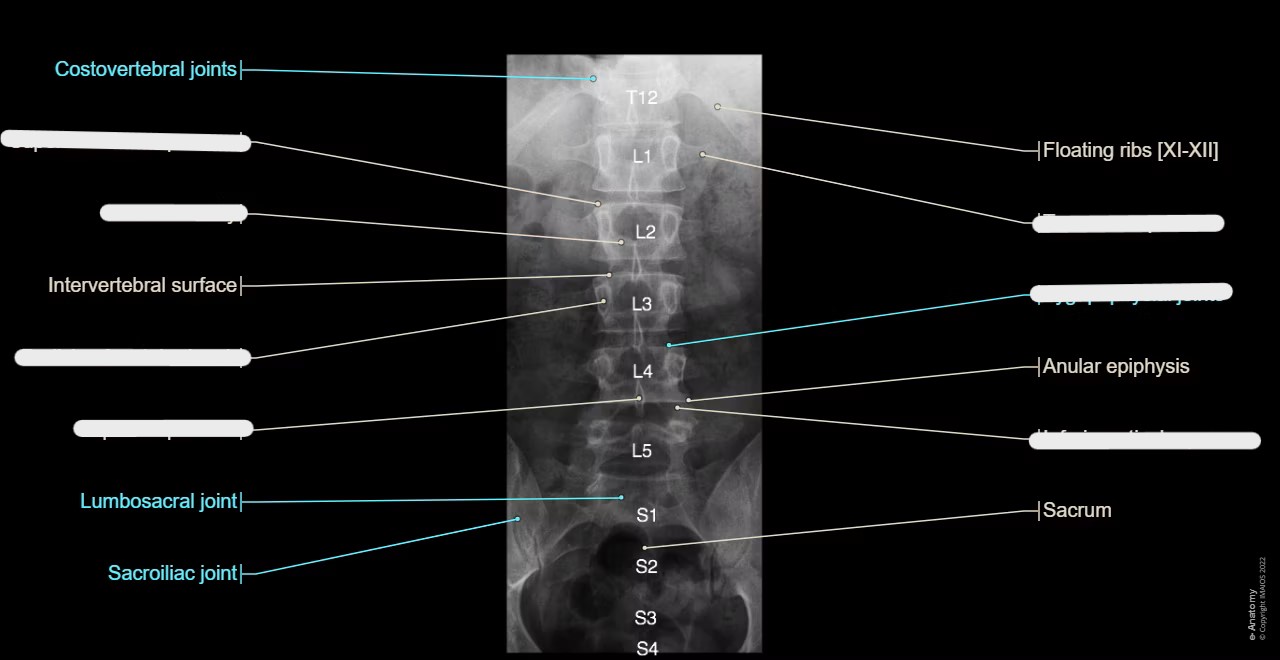


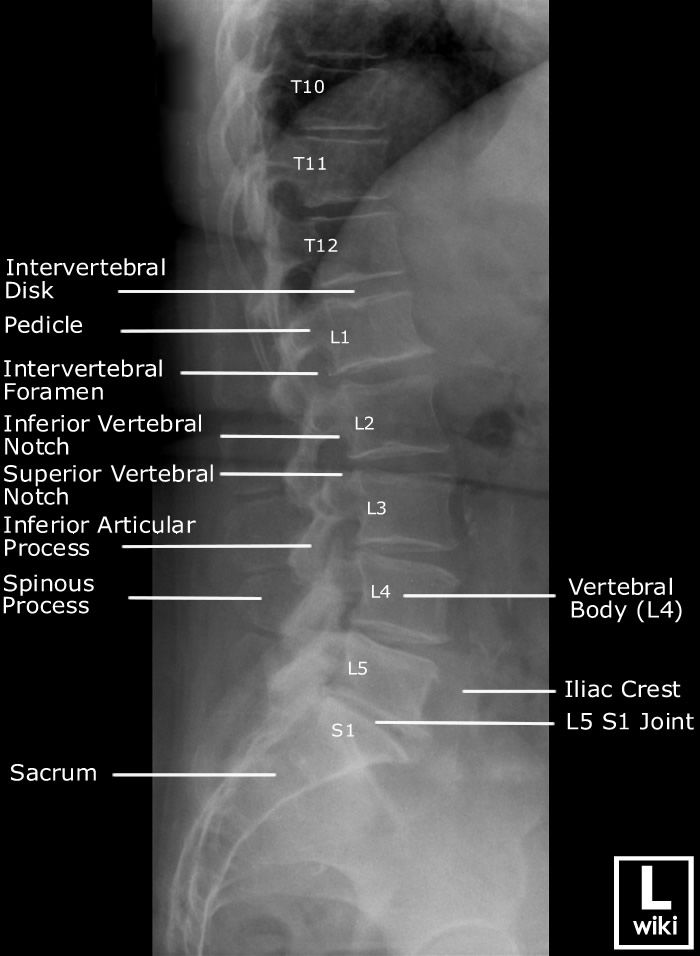
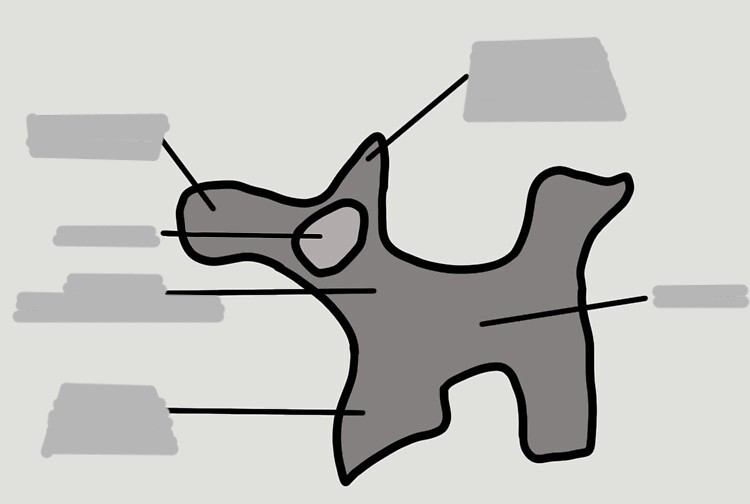
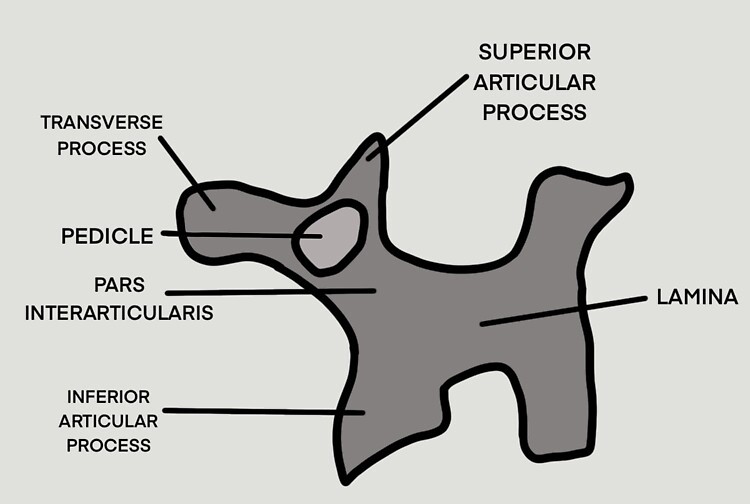
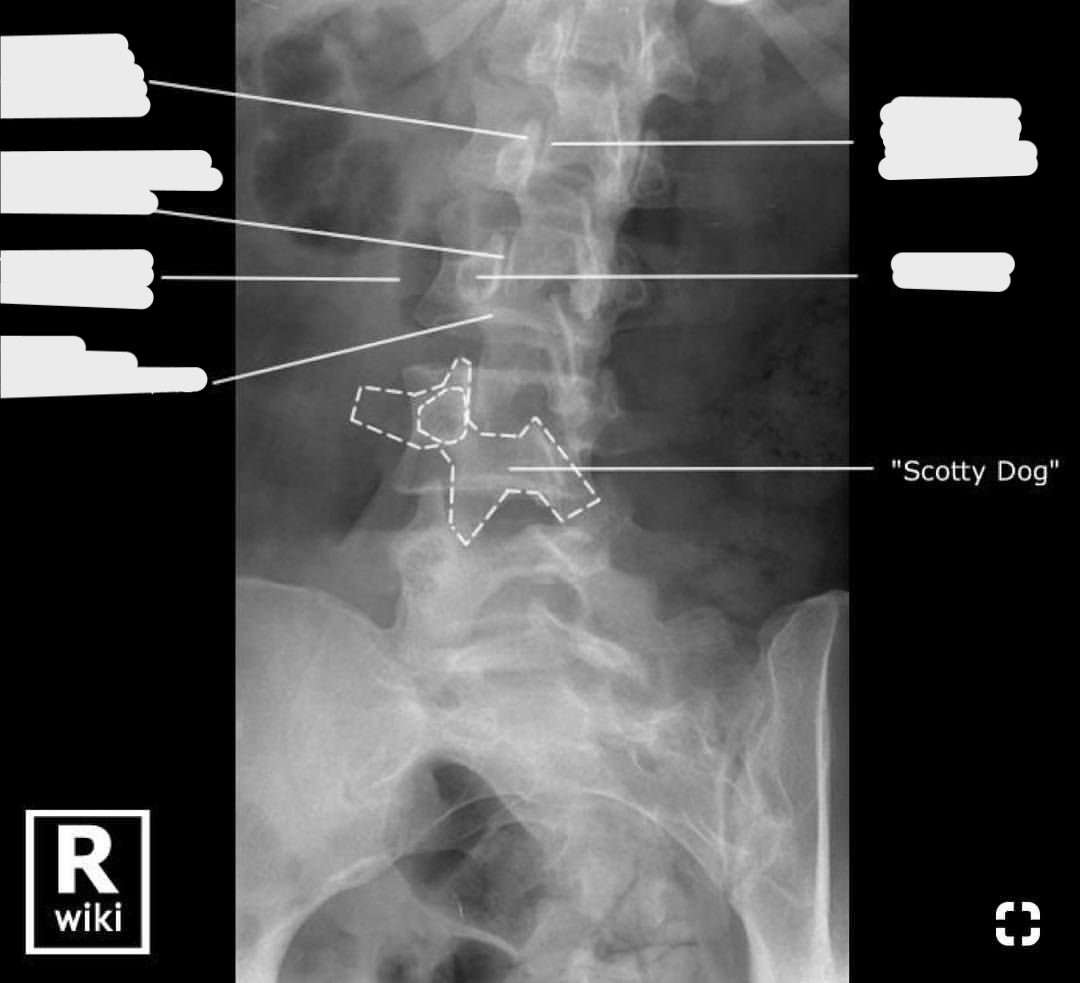

What are the superior articulating processes of the sacrum?
processes that articulate with the inferior articulating process of L5
The superior articulating processes of the sternum and the inferior articulating processes of L5 form the ___
last pair of zygapophyseal joints
What is the sacral promontory?
the prominent ridge at the upper anterior margin of the base of the sacrum
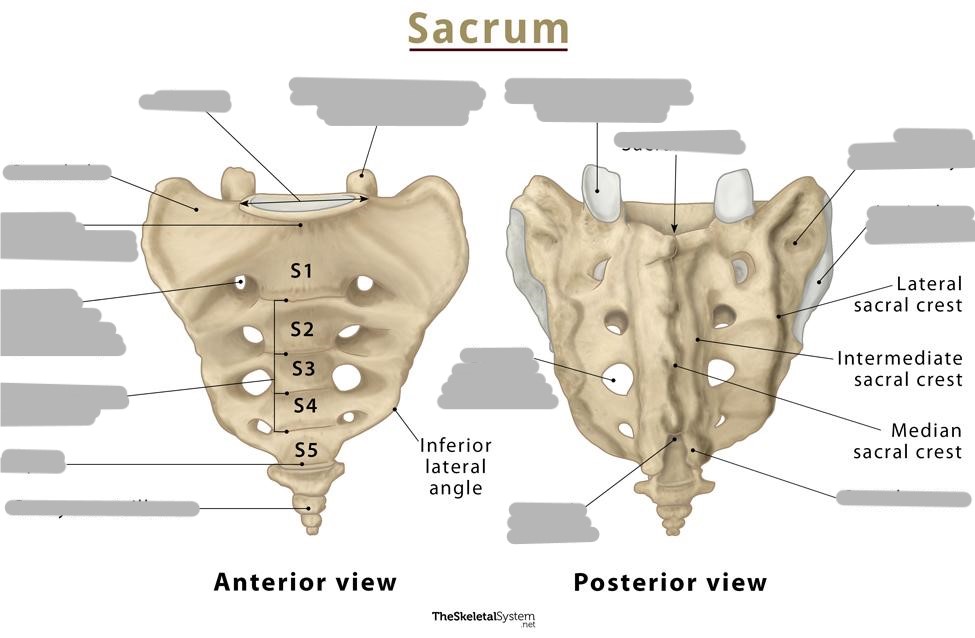
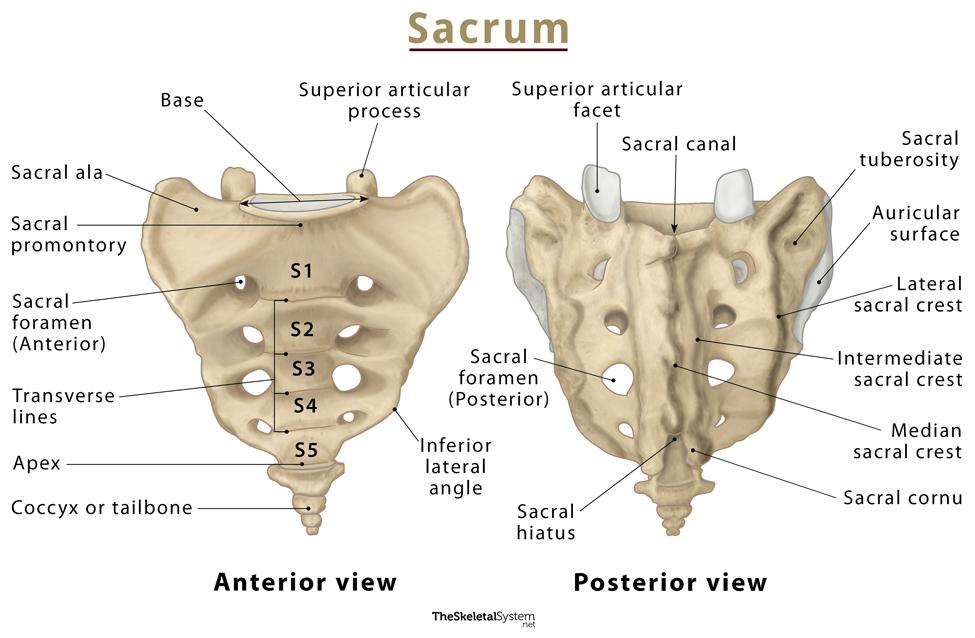
Explain the ala of the sacrum
large wing-like masses lateral to the sacral base
The auricular/articular surface of the sacrum articulates with the ___ to form the ___
iliac bones of the pelvis; forms the SI joints
When are the SI joints seen on an x-ray?
25-30 degree obliques
Where is the sacral canal located?
What is the function of the sacral canal?
directly posterior to the sacral segment bodies;
transmits sacral nerves
What are the sacral foramina?
foramen located on the anterior and posterior walls of the sacral canal
4 anterior pairs
4 posterior pairs
(16 total)
The sacral foramina are connected on the anterior side by ___
transverse lines
What are the sacral cornua?
two processes that project inferiorly from the posterior aspect of the last sacral segment to join the coccyx
What is the classification of the sacrococcygeal joint?
cartilaginous, amphiarthrodial, symphysis
The coccyx is made up of ___
4 fused bones
Where are the base and apex of the coccyx located?
base is superior
apex is inferior
What are the coccygeal cornua?
superior projections off of the posterior lateral aspect of the 1st coccygeal segment (joins the sacral cornua)